












Although roadways are meant to be shared by everyone, sharing the road with motor vehicles can be dangerous for pedestrians. According to the Governors Highway Safety Association (GHSA), pedestrian fatalities in 2018 reached a three-decade high. Young children and senior adults are the most likely to perish in these tragic encounters.
GHSA Executive Director Jonathan Adkins remarked that “In the past decade, pedestrian deaths have risen 35%. The alarm bells continue to sound on this issue; it’s clear we need to fortify our collective efforts to protect pedestrians and reverse the trend1.”
Warning lights like those we manufacture at Eltec aid in the effort to improve pedestrian safety. When pedestrian crossing lights are present, one might think it would be clear when a pedestrian may cross.
Differences in warning light systems can lead to uncertainty when it comes to crossing the street. Pedestrians may be confused by the warning lights put in place to protect them. Some choose to cross in the wrong areas or at the wrong times, while others seemingly disregard the warning lights altogether.
Fortunately, once its use and its benefits have been clearly explained, a pedestrian light crossing is easy to understand and use correctly. Taking the time to learn about these warning lights is important. It can be the difference between a tragic accident and safe passage across a road.
There are a few fundamental points to address before moving into an explanation of lights. These points are key to pedestrian safety and should be observed at all times, even when signage and warning lights are in place.
Pedestrians must be mindful of traffic the entire time they are crossing. Never trust that a vehicle will stop. Take responsibility for your safety and pay attention to your surroundings.
The most common pedestrian warning light system is the Walk/Don’t Walk signal. Despite its frequent use, some of its features may remain misunderstood by pedestrians.
Some signals can sense pedestrians; however, they are expensive and thus infrequently used. Most signals rely on push-button activation. The push-button is located on a pole at or near the signal. Pedestrians should push the button to notify the system that they are present and waiting to cross.
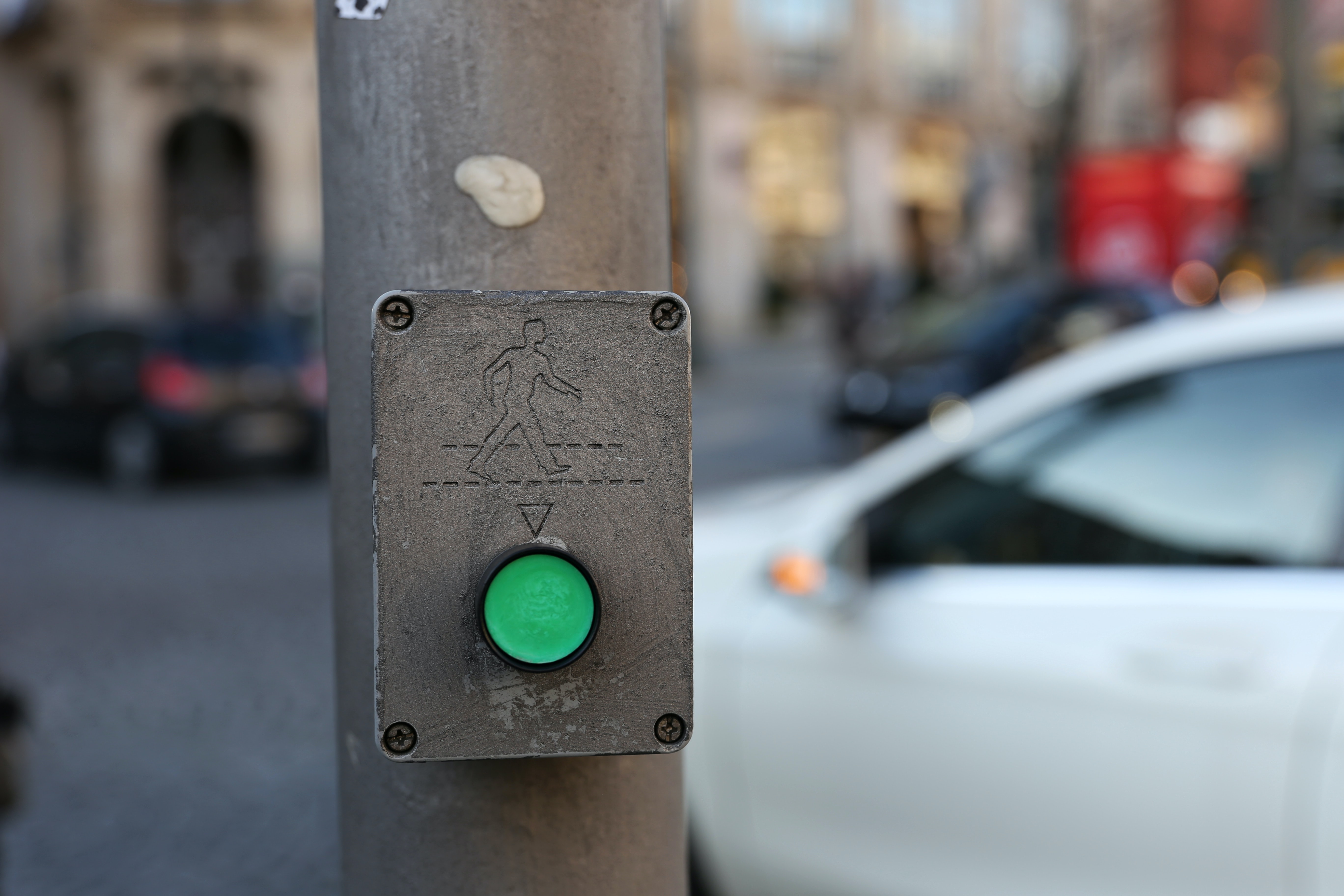
Pedestrians may fail to utilize the push-button activator, perhaps thinking that it does little or nothing. This is far from true.
In a sense, the push-button can be considered to be similar to an elevator button. When a person pushes the elevator button, it notifies the system that someone is awaiting the elevator on a specific floor. The elevator still must manage users along the way, allowing people to get on or off on floors leading to the waiting person’s floor. When it arrives, it opens and allows the person entry.
Similarly, the push-button activation for pedestrian crossing lights must go through prearranged phases to accommodate traffic and pedestrians on all sides of the road.
The pedestrian light crossing system will also allow more crossing time than the signal allows when it is addressing only the needs of motor vehicles.
This does require the pedestrian to wait, but the change will come. Therefore, waiting for the signal not only ensures a greater level of safety but also provides a longer crossing time.
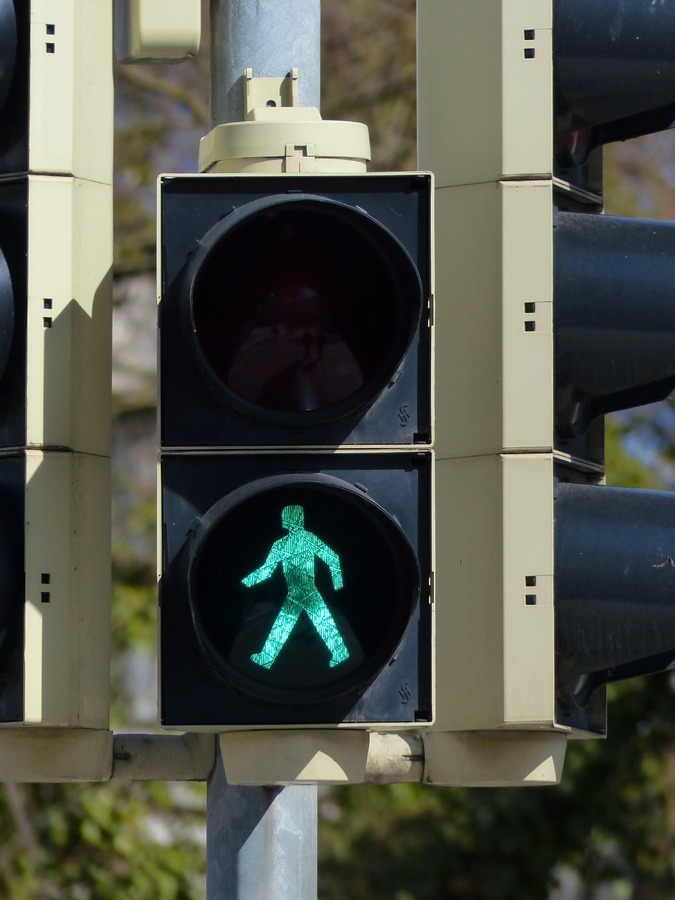
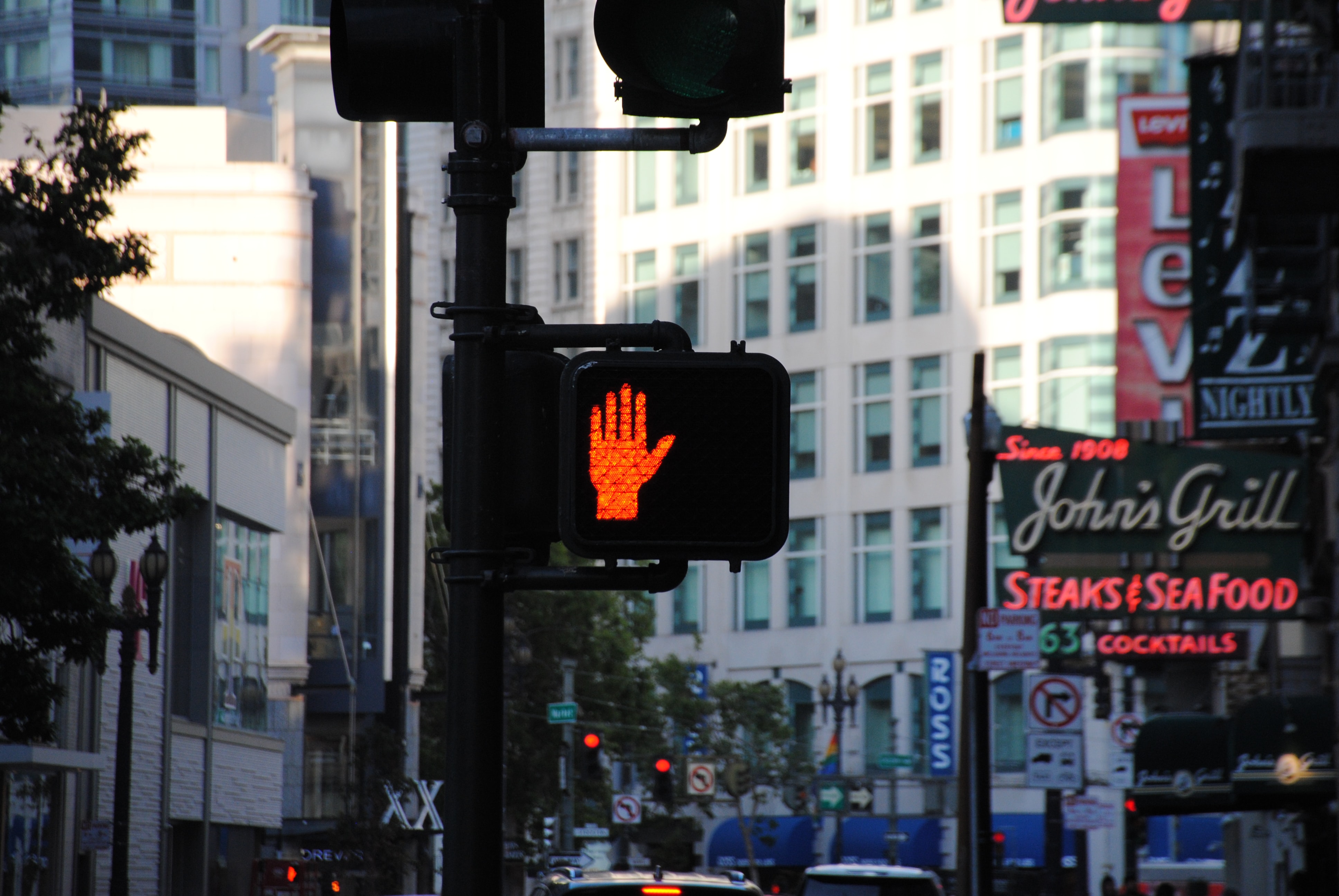
Keep in mind that the flashing DON’T WALK or flashing UPRAISED HAND should not cause alarm. Pedestrians are allowed to be in the intersection when those lights are flashing.
The flashing lights are an indicator of the Pedestrian Change Interval, or the time allowed for the pedestrian to cross. In most cases, this time is based on the width of the road and a pedestrian traveling speed of 3.5 feet per second. Although a pedestrian may wish to increase their gait, they are legally allowed to continue to the other side of the road or a pedestrian refuge like a median.
Rectangular Rapid Flash Beacons, or RRFBs, are usually used at crosswalks located midblock or at intersections without traffic signals. They are most often activated by a push-button controller located on a pole near the crosswalk. A yellow diamond-shaped pedestrian crossing sign and a rectangular bar of LED lights are installed at the top of the pole. A second pole with the same features is installed at the other side of the crosswalk.
When Eltec’s RRFB is activated, the rectangular bar LED lights flash in a left/right wig-wag sequence on both sides of the crosswalk. The flashing light indicates to drivers that pedestrians may enter or be in the roadway, and drivers should proceed with caution.
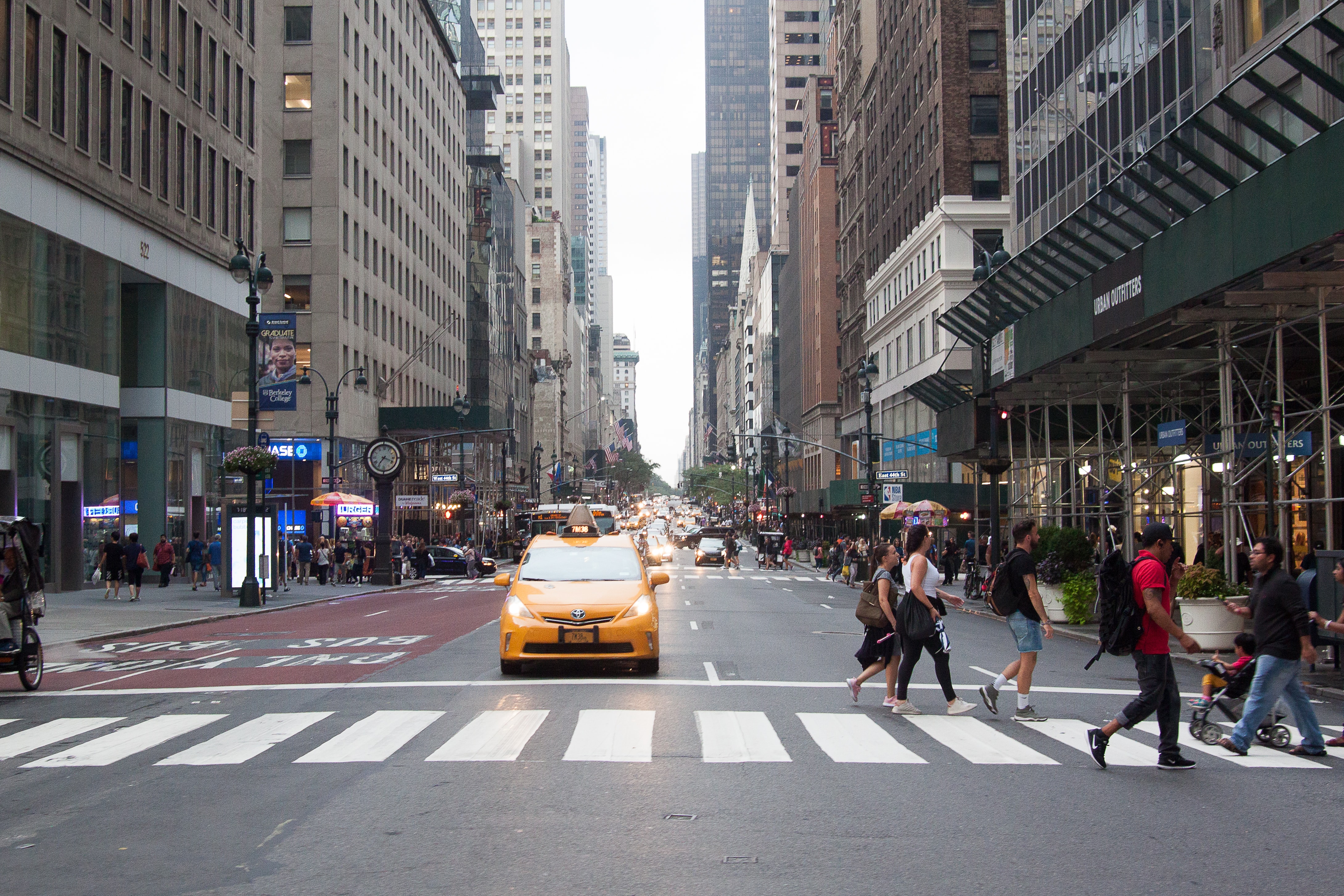
Pedestrians, too, must proceed with caution. These lights do not regulate the road in the same way as a traffic signal. When drivers approach an RRFB, they are not required to stop immediately. They are advised to slow and proceed with caution while checking for pedestrians.
As a pedestrian, it is your responsibility to walk defensively and make sure drivers see you. You have the right of way, but that’s not an assurance that drivers will see you or abide by the law if they do. Be careful.
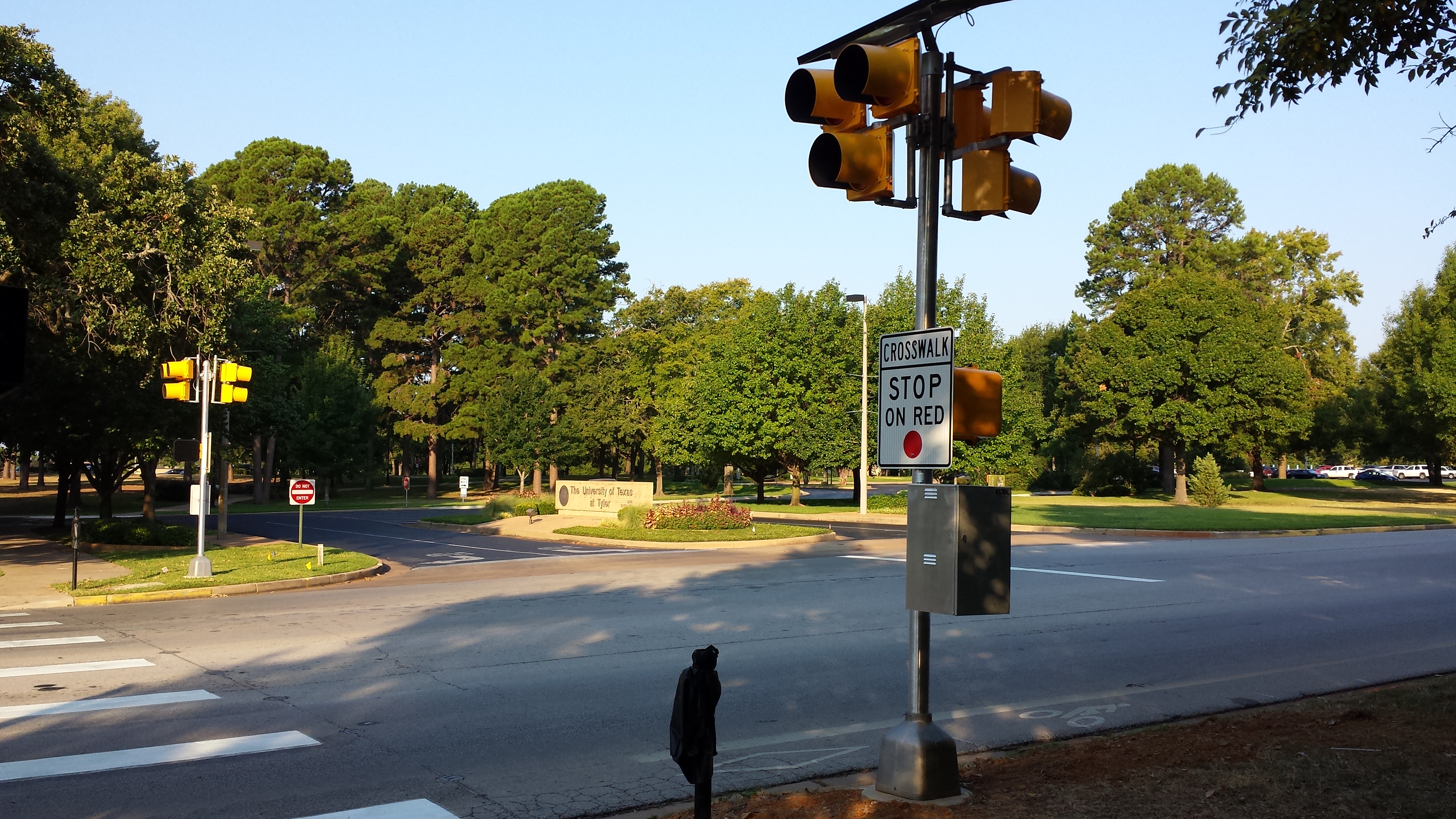
Eltec’s HAWK, or High Intensity Activated Crosswalk, is a signal that utilizes features from both the standard Walk/Don’t Walk signal and the Rectangular Rapid Flashing Beacon. Like RRFBs, HAWK systems are typically installed in midblock locations or at unsignalized intersections.
When a pedestrian approaches a HAWK signal, a solid red UPRAISED HAND is displayed. The pedestrian initiates the system using a push-button activator. The hand will remain solid as the HAWK system notifies drivers they must prepare to stop, first with flashing yellow lights and then solid yellow lights. When the drivers’ signal changes to solid red, the pedestrian signal changes to a walk indicator.
The pedestrian may now, while exercising caution, enter the intersection to cross. The Walk indicator is replaced by a flashing Don’t Walk indicator. A countdown informs the pedestrian of how much time remains to cross the street.
As with the standard Walk/Don’t Walk system, pedestrians may complete their path across the street during this time. Pedestrians may not, however, enter the crosswalk from the curb during this sequence. They must wait and reactivate the system to receive a WALK signal.
During the pedestrians’ flashing sequence, drivers see a flashing red light. Pedestrians must be aware that drivers are allowed to proceed through the intersection after stopping to check for pedestrians. Pedestrians still have the right of way; however, they also have the responsibility to use caution while crossing.
Warning lights increase driver attentiveness and help make pedestrians more visible. But make no mistake: having the right of way is not a guarantee that you will be given the right of way. Drivers may become distracted, they may make mistakes, and some may choose to ignore the rules of the road. As a pedestrian, you are responsible for your conduct.
Activation buttons and warning lights are most effective when pedestrians use them the way they were designed to be used. Taking measures to enhance visibility is imperative to a safe crossing experience. Don’t depend on drivers to keep you safe. By being cautious and taking advantage of the benefits of pedestrian crossing lights, pedestrians can make the road a safer place for everyone.